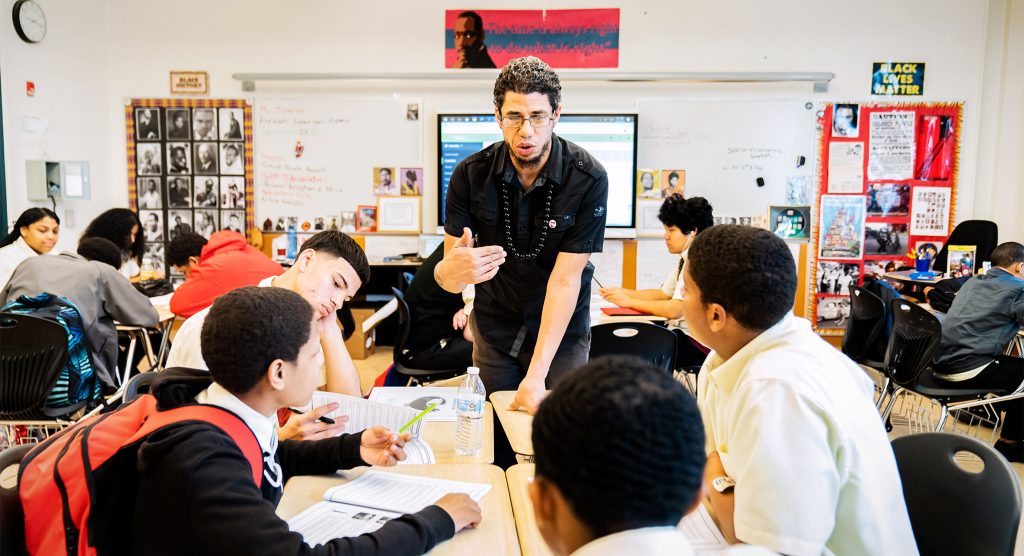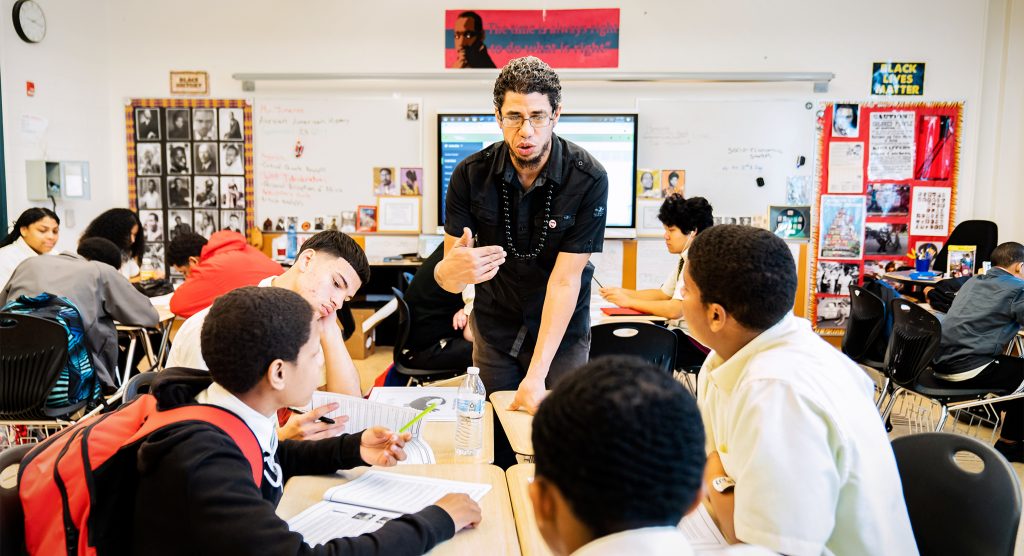Teaching for Democracy: An Information Guide on CRT for PA School Boards
Provided by PA Education Scholars
- PaEdScholars@gmail.com
- Download the Information Guide (PDF)

School districts in the state of Pennsylvania are committed to teaching all students. To achieve this, schools must teach the full history of the United States so that students can understand the world they live in. Students need skill sets that allow them to analyze and understand historical and current events. Educators draw upon a range of theories to shape curriculum and practice, and Critical Race Theory (CRT) is one of those theories.
What is CRT?
CRT is a framework for looking at how historical, legal, economic, and educational practices and policies have led to unequal outcomes. The theory argues that historical patterns of racism are embedded in modern institutions, and that the legacies of slavery, segregation and Jim Crow still create an uneven playing field for Black, indigenous, and other people of color. An underlying idea of CRT is that racism is not a matter of individual prejudice but is built into the systems in America. Harvard Law professor and Civil Rights attorney Derrick Bell was among the first to introduce the term in the 1970’s.
Why is CRT being critiqued?
- The conversation about CRT in schools is being used to undermine educators’ ability to teach students the full history of our country and world and the develop the skills students need to explore, understand and communicate with others about these issues.
- These attacks are attacks on public education itself. The same organizations funding the attacks are quite clear that they want to end public education and provide vouchers only instead.
What does this have to do with democracy?
Teaching for democracy means welcoming multiple points of view that allow us to recognize the diversity within our unity. It also means having the knowledge and analytical skills needed to make informed decisions. All children have the right to learn about the historic and present-day experiences of all people. Educators must be well prepared to teach students about the rich complexity of our society. This is not indoctrination. Educators are sharing multiple theories and frameworks to support student inquiry.
What can and should schools be doing in the movement toward equity?
Educators must teach the full history of the US and world. History is just that: a story. The story may differ depending on whose perspective is centered. Social studies and history teachers can help students understand how the story changes with different protagonists and teach history in a way that is inclusive of and sensitive to many different peoples’ experiences. This approach to teaching history acknowledges the uncomfortable truths and consequences alongside the prideful accomplishments and joyful moments.
We must teach students to develop the necessary skills of researching, evaluating, and understanding facts so that they are able to think critically about the issues they are facing now and those they will face in the future.

Frequently Asked Questions:
Why is CRT a useful framework for educators?
Educators draw on a range of frameworks to help them to create curriculum and practices that teach students how to be thoughtful and democratic citizens. CRT is one of many frameworks that can help us do that.
Are we teaching Marxism?
No. We are teaching ideas and skills that help to strengthen democracy; not just teaching facts- but presenting and investigating the complexities of both past and present.
Why do we need to teach in these ways?
When educators present content in this way, students start to see themselves as part of a bigger story. This type of instruction helps students develop critical thinking and analytical skills, both of which are fundamental to our democracy.
Does teaching about race and racism make students feel uncomfortable?
- CRT is not about individuals; it is about policies, laws, and practices. However, real information can bring up uncomfortable questions and new ways of thinking about ideas that may be unsettling.
- Learning new and possibly uncomfortable information does not mean making students feel ashamed. It means giving them the information and tools necessary to learn about and participate in their democracy.
- Those who draw upon CRT are not teaching youth to hate themselves; they are supporting students in exploring the larger issue of systemic racism. Systemic racism is not the fault of particular individuals, especially kids.
Does teaching about uncomfortable realities hurt children or communities?
- We all learn through support and success as well as discomfort.
- We all need to understand our past so that we can fully participate in and create a more equitable future.
Download the Information Guide (PDF)
Links & Resources
Pennsylvania School Boards Association
Examples of district statements
American Bar Association Statement on CRT
Toolkits
- Zinn Education Project: toolkits by theme
- African American Policy Forum’s initiatives
- Facing History and Ourselves educator resources by topic
Understanding the Attacks on Teaching: A Background Brief for Educators and Leaders
